Designing with Disaster is the second iteration of the Living with Disaster exhibition, which took place in Tokyo in 2022. Designing with Disaster brings the content to Los Angeles to be displayed in a new context and is accompanied by events and symposia.
A powerful and optimistic array of innovative urban designs focused on withstanding natural- and human-instigated disasters while simultaneously responding to the multiple hazards of climate change.
January 27 – April 02, 2023 @ Daily 11:00am – 7:00pm Exhibition – Designing With Disaster: Stories from Seven Regenerative […]
The publication exhibits three years of research, architecture, and urban design examining the historical and future relationship between the built environment and California wildfires. FireCity FireLand collates observations, research studies, and projects from a panel of expert professionals and academicians examining wildfires and other natural hazards around the world, with ambitious student proposals envisioning a future condition in which natural and artificial environments symbiotically coexist.
Welcome to Rumble 2022, AUD's year-end exhibition of student work. Now in its 14th installment, and the first in-person since 2019, Rumble transforms final reviews into an interactive installation and celebration, in which AUD's Perloff Hall becomes a stage and incubator for student work and real-time dialogue
https://regenerativeurbanism.org/
Across the globe, 21st-century cities face a growing number of technological, social, and environmental challenges. The increased intensity of global […]
The fourth and final webinar in the Rethinking of MA Webinar Series will examine the role of MA in Japanese film. Our guest will be filmmaker Ryūsuke Hamaguchi, whose film Drive My Car, is Japan’s official entry for Best International Feature Film for Academy Awards 2022 and is now on the Oscars shortlist for this category. Hamaguchi, a renowned director and screenwriter who first gained attention for The Sound of Waves and Voices from Waves, his thoughtful documentaries (co-directed by Ko Sakai) about survivors of the 2011 Tōhoku Earthquake, as well as several recent dramatic full-length feature films, pays close attention to timing, pacing and “space” in his films.
The third webinar in the Rethinking of MA Webinar Series will examine conceptions of MA in contemporary Japanese cuisine. Our guest will be Prairie Stuart-Wolff, a writer, photographer and producer of the Japanese food and culture website www.cultivateddays.co. Living and learning in rural Japan, among a community of ceramic artists, she has developed a unique perspective on Japanese food cultivation, preparation, and presentation, both traditional and contemporary. Professors Hitoshi Abe and Ken Tadashi Oshima, hosts of the Rethinking of MA series, will moderate the conversation with Stuart-Wolff, discussing the importance of MA/seasonality in the choice of ingredients, MA/the symbiotic relationship between food and the dishes in which it is served, and the rituals of the table that guide how food is received.
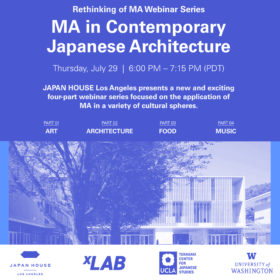
The second webinar in the Rethinking of MA Webinar Series will examine MA in Japanese contemporary architecture. Manabu Chiba, Professor of Tokyo University and Principal of Chiba Manabu Architects, will share his views about the role of MA in the design of contemporary public space, where MA is translated as “Relationship/Distance between people." Together, the speakers will explore how the idea of MA has shaped Chiba’s approach to designing Japan’s public architecture and community environments and his philosophy for teaching the next generation of Japanese architects. The webinar will conclude with an audience Q&A.
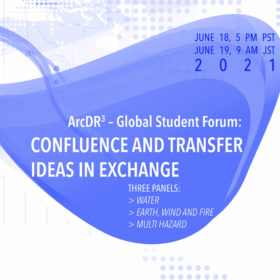
ArcDR3 – Global Student Forum: Confluence and Transfer:: Ideas in Exchange provides a unique opportunity for the students of 11 universities participating in the ArcDR3 Initiative, to meet, to present their current and/or completed research and design projects, and to discuss future actions to advance the collective work on New Agendas for Regenerative Urbanism.
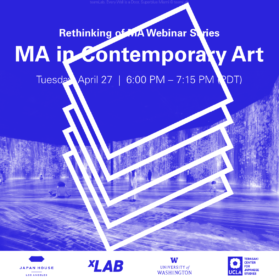
MA webinar examines the application of MA in the realm of contemporary art. Takashi Kudo of the international art collective, teamLab, shares video footage of three separate examples of digital installations created by the team. Professors Hitoshi Abe and Ken Tadashi Oshima, hosts of the series, are moderating the conversation with Kudo, to explore how the idea of MA, or time/space consciousness, has been incorporated into and shaped teamLab’s digital creations.
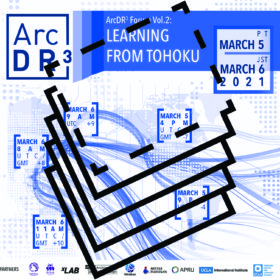
ArcDR3 Event: ArcDR³ Forum Vol.2: Learning from Tohoku takes place online on March 5, 2021, at 4 pm PDT/March 6 […]
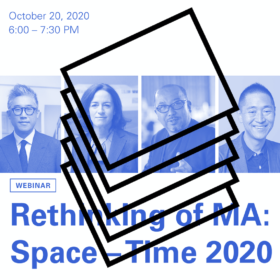
Today in 2020, notions of time and space have been disrupted by COVID-19 with shifts to virtual communication and work on global-local levels, fundamentally questioning notions of MA: Space-Time and offering opportunities for its re-interpretation. How do physical local contexts connect with the global contexts based on time zones rather than actual travel and distances between Japan and the world? How does our current situation relate to MA: Space-Time in our day to day activities between these virtual and physical situations? The discussion will be led by Hitoshi Abe (UCLA), Sharon Johnston and Mark Lee (Harvard University), and MC'd by Ken Tadashi Oshima (University of Washington).
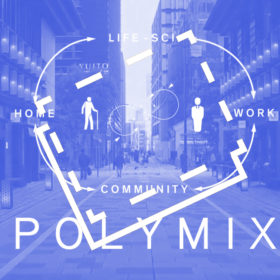
In June 2020, two WORKHOUSE Research Studio students, Jacob Sertich and David Vasquez received the Chao-Di Su Award for the Best Project in Graduating class 2019-2020.
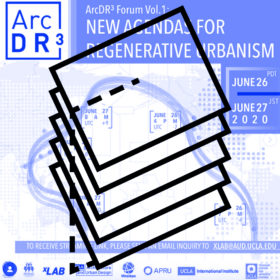
The first ArcDR³ event – ArcDR³ Forum Vol.1: New Agendas for Regenerative Urbanism was held on Friday, June 26. Under the umbrella of the “Grand Syllabus,” the 11 participating universities presented their syllabi for their context-specific design studios in the upcoming 2020-2021 academic year. Discussions were divided into three panels: #1: Earth, Wind and Fire, #2: Water, and #3: Multi-hazard.
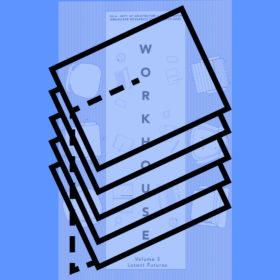
WORKHOUSE 3 Latent Futures is the last in the WORKHOUSE Research Studio Essay Series Trilogy. It concludes a three-year study of the grey zone between domestic and workspaces and activities by UCLA students.
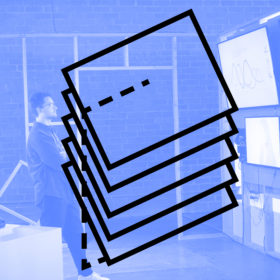
WORKHOUSE Research Studio is on display at A+D Museum. Duration: September 21, 2019 – January 12, 2020 “This new type […]
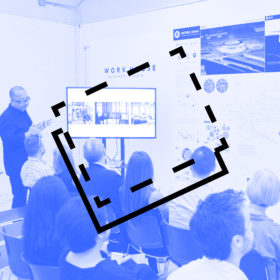
UCLA Architecture and Urban Design's end-of-year all-school exposition RUMBLE engages students, faculty, and the international design community in a discourse on the forefront of contemporary design and innovation. Every year, Research Studio lead by Hitoshi Abe presents its research and design projects to leading critics and practitioners.
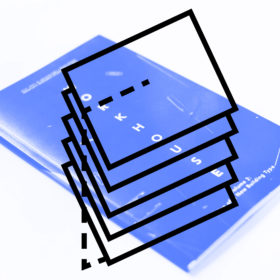
This volume contains a collection of essay and presents a series of perspectives on contemporary phenomena surrounding co-working culture. Throughout the texts, co-working spaces are analyzed as an indicator of the broader shifts brought about by development in technology, changes in lifestyle, and the rise of the sharing economy.
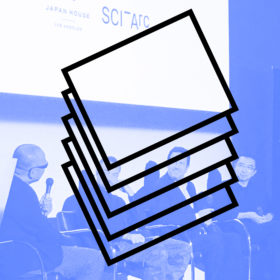
Designing the Future was a panel discussion organized by Japan House Los Angeles that took place at SCI-Arc on October 25, 2018. Panelists Liam Young, Peter Frankfurt, and Sou Fujimoto each presented their unique view of the future, followed by a conversation moderated by Hitoshi Abe about how each one is working to actively produce the future.
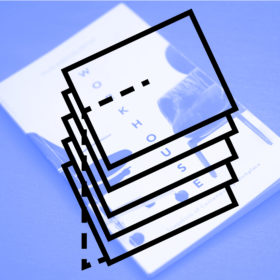
This collection presents snapshots of our contemporary work environments through an examination of the ways in which architecture and design have conceived the idea of the office and other workspaces since the turn of the 21st Century.
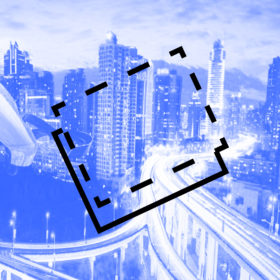
Using paradigm of “time-space” as the main topic, Reimagining Tokyo's Mobility Symposium will discuss the development of new transportation modes like autonomous vehicles, the mobilization of place through the sharing economy, and mobility without physical moving.
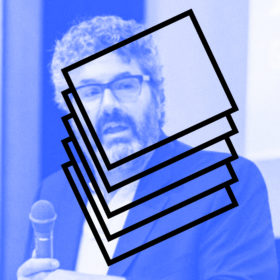
While digital tools allowed architects to animate spaces by creating visual dynamism, technology had no significant change to the underlying goals of the architect: however, the thinking about architecture changed,
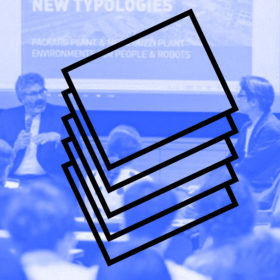
On July 31, 2017, Greg Lynn gave the Keynote Lecture at the inaugural xLAB Summer Program. The lecture was titled, Localization: Static […]
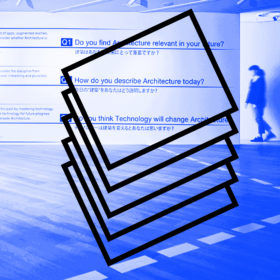
Cloud of Thoughts is a participatory exhibition and alternative gathering place to meet with other people and exchange ideas about our future built environment.
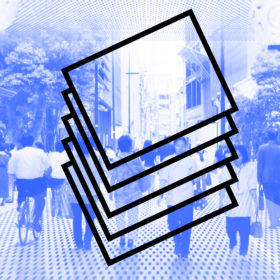
While it seems that technology, community, and aesthetics are unrelated to each other, architectural aesthetics of each era has developed as representations of technologies of the eras.
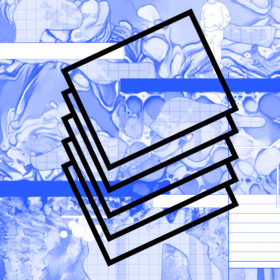
The teleological eventuality of humanity’s logic and reason is Artificial Intelligence, which makes this an opportune moment to critique as well as to create a heterotopic world in which both corporeal (human) and virtual (AI) sentient existences can co-exist in a new cybernetic world order.
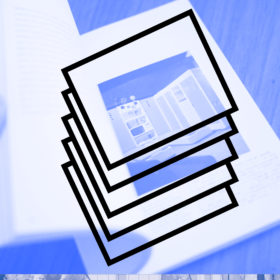
This volume presents an image of the future of our living environment through an examination of the ways in which the future of architecture and the city has been conceived since the beginning of the modern period, illustrated through plans and photos from past decades.